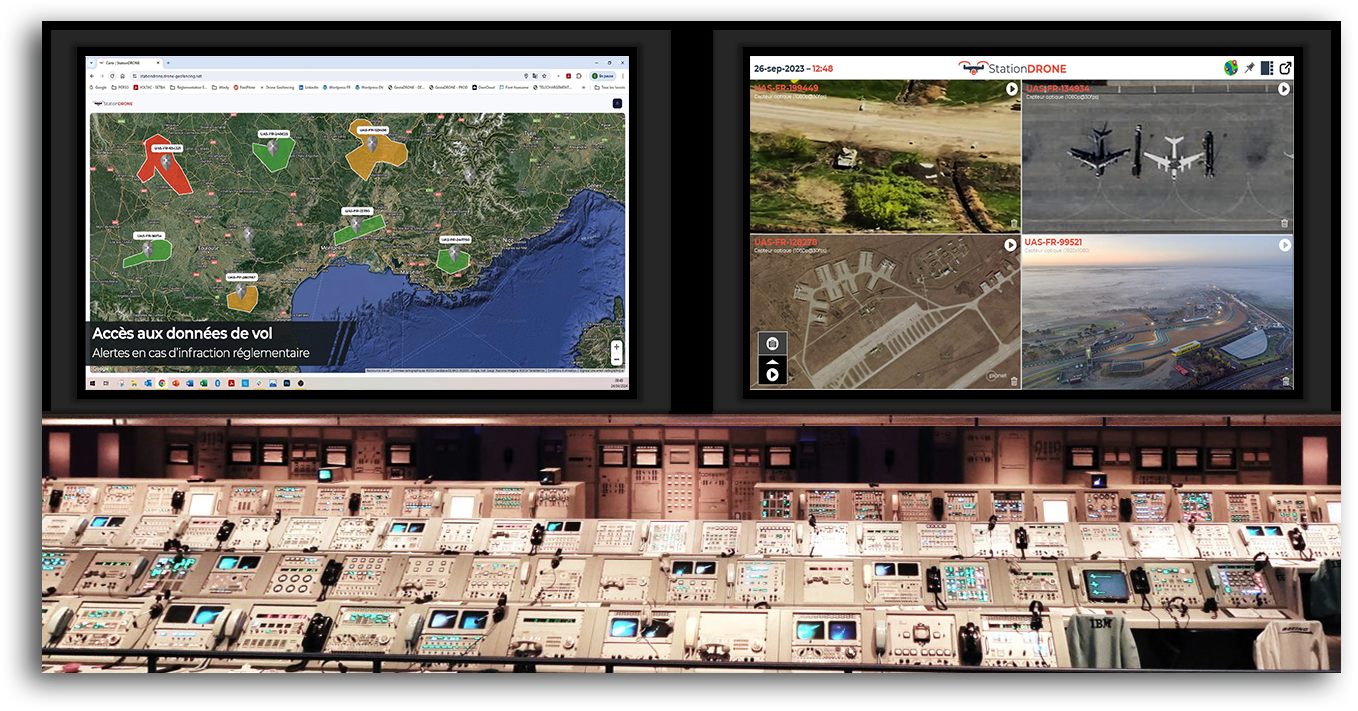Airspace securing
Securing airspace against the use of civil drones
Since 2016, the explosion of drones has been described as a real threat to the safety of airliners and to the population. Indeed, this new type of traffic in low altitude airspace generates unprecedented disruptions: (i) Prohibited shooting, (ii) Object of a specific weight flying above our heads, etc.
Several solutions have therefore been envisaged by the Directorate General of Civil Aviation (DGAC) to deal with this problem.
Tightening of regulations
The regulation of the use of civil aircraft and drones, previously non-existent, has recently been defined throughout Europe. Although aeronautical rules are managed at national level, some are common to the whole of European airspace.
French regulations set several limitations on the overflight of some areas by civilian drones. These regulations have just been tightened by the DGAC (Regulations evolution (DGAC – 12 december 2019)) :
- Registration of aircraft with the implementation of digital and luminous signalling system.
- Strengthening the skills of the remote pilot.
- Strengthening of the operator’s administrative procedures.
- Strengthening of flight restrictions and pre-flight procedures.
Drone reporting devices
From the 1st May 2020, new drones and scale models weighting more than 800 grams in circulation will have to emit. These rules will be mandatory for aircrafts already in circulation from 1 November 2020:
- An electronic or digital signal on the frequency of 2.4 GHz to enable identification by sensitive site detection equipment as soon as they get too close (range of a few kilometres). This device is a transponder, in other words it emits every 3 seconds) or every time it moves more than 30 metres) its position, its route and its speed. The purpose here is to distinguish an unidentified object (malicious drone) from an identified object (using its registration number).
- A light signalling device allowing a security officer to better see an incoming drone.
The system put in place does not centralize the information collected but provides additional information to each team in charge of the security of a given sensitive site.
New way of detection improvement
Although efficient means of detecting drones already exist, the DGAC wishes to put in place new detection methods that can respond to the increase in the volume of aircraft violating the flight restrictions imposed.
Many companies specialising in airspace security have therefore designed reliable detection solutions:
These are based on a network of wireless RF sensors that detect the position of all types of drones within a defined perimeter. The latter is linked to a tracking software that analyses the collected data.
These security systems make it possible, by means of triangulation algorithms exploiting the power of the radiofrequency signals emitted, to locate the remote pilot of a drone.
New anti-drones weapons
In order to fight against detected drones (malicious or not), the DGCA is also working on countermeasure systems to fight effectively against the potential threat. The purpose here is to go beyond the notion of airspace control by providing safety teams with means of action.
In this respect, we can mention anti-drone rifles, drones armed with nets, high-performance jamming systems against the GPS system or the drone operator’s radio control, or even laser weapons.
Of particular note are the two weapon systems used by the US Army to combat swarms of drones (similar to the attack on oil sites in Saudi Arabia).
- The Thor (Tactical High-Power Microwave Operational Responder) weapon system is a defensive weapon designed mainly to secure military bases and camps. The device can counter flying enemies at a relatively short distance. THOR is equipped with an antenna capable of ” shooting ” powerful bursts of waves towards one or more drones to put them out of action.
- The Phaser weapon system, developed by the Raytheon company, uses a very powerful laser beam to burn out the electronics of the devices within range.
These anti-drone weapons of the American army are already known all over the world and could very well arrive in France. In any case, this is the wish of the DGAC, which would like to be able to neutralize in a few seconds a drone which penetrates a sensitive site.



